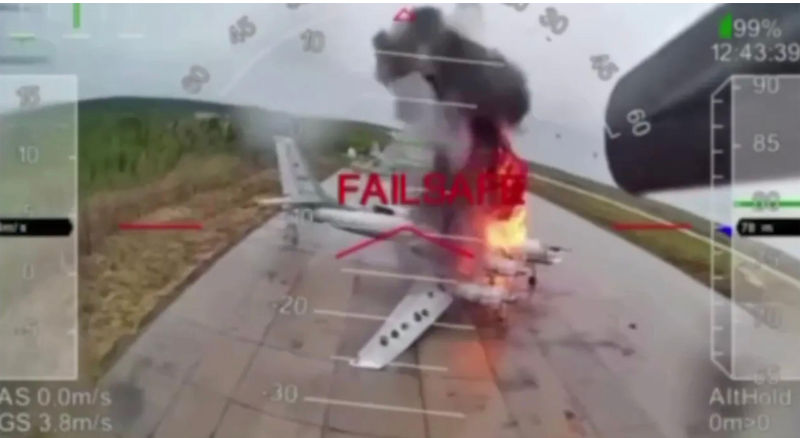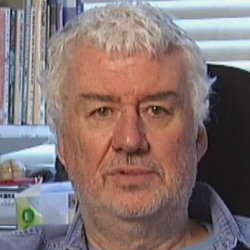Reflections on Ukraine’s 'Spider Web' and other attacks on Russia: why the euphoria?
June 14, 2025
Reports by invested parties of battlefield success in most wars — and the war between Russian and Ukraine is an exemplary case — are best read when accompanied by the aphorism of the ancient Greek tragic dramatist, Aeschylus — in war, truth is the first casualty — and then following the unfolding of Newton’s 3rd Law as applied to war reportage: every claim is met with a counter-claim until something resembling an account corresponding to observable facts emerges. This, almost without exception, reduces the original version to an ambitious fable.
Foreshadowing the fair question as to why certain sources are held to be reliable, or more reliable, the short answer is this: over time (years and in some cases, decades) and with the experience of sifting through contending and contradictory claims, some sources earn credibility and respect.
In the context of what follows, they too are English language sources, predominantly featuring the work of former Western intelligence analysts and technical specialists whose analyses, arguments and conclusions over time have been borne out. These, in turn, where appropriate, cite both Russian and Ukrainian sources.
It is of considerable significance that their findings have eventually been incorporated into the standard accounts of those sources which originally peddled fables. This doesn’t, of course, make them infallible, but they are in the judgment of this writer the best we have; their contents have been distilled without citations (but also without the use of any AI application).
Relevant are the initial accounts in the English language mainstream media of Ukraine’s strikes. The claimed destruction was couched in euphoric, even hubristic, terms. A cocktail of pleasure, excitement and happiness infused them; missing was the reflexive scepticism that should have tempered the enthusiasm; absent was any sense that something might be absent from the triumph.
Was it, in fact, a triumph? Hardly.
The operation codenamed “Spider Web” appears to have been long in the planning — 18 months is a common time frame — and involved the smuggling of drones across the Russian border in the roofs of mobile wooden houses loaded onto trucks; the attack was initiated when the the roofs of the containers were opened by remote control, and the drones activated to fly towards the targets – aircraft on Russian military airbases.
A widespread consensus exists that the attacks — a maximum of six in total — were launched from sites close to the targets themselves which were located deep inside Russia and at its geographical extremities. This constituted a definite strategic surprise. Correspondingly, they also qualify as a major public relations coup and psychological boost to Ukraine and its supporters.
The half-life of the triumph, however, is likely to be measured in days rather than weeks. Phrased differently, they did not deserve their immediate celebration as a “2nd Pearl Harbour”. Those making this claim were devoid of irony: Pearl Harbour was both spectacular and a failure. The imperial Japanese Navy’s prime objective of destroying the US Navy’s Pacific carrier fleet was not achieved because those ships were at sea; as well, the important oil storage and naval maintenance and repair facilities survived unscathed.
After further interrogation of the triumph, most claims begin to unravel. The Ukrainian claim, for example, that more than six locations were attacked fails when video analysis can be read to reveal that only two were successful; moreover, video analysis of one attack on a named target reveals that it relates to an airfield in another part of Russia, which was not damaged anyway.
This was an “own goal,” the offending video having been supplied by the Ukrainian Centre for Information and Psychological Operations. There is also considerable doubt as to whether any more than two airfield were successfully attacked in the first place.
In terms of the material damage inflicted on Russia, revisions downwards have been necessary. From initial declarations that 40+ aircraft representing more than one-third of Russia’s strategic aviation assets were destroyed or damaged, the estimate now is that a maximum of five strategic bombers (three of which are beyond repair) and one surveillance-reconnaissance aircraft were disabled equating to 4% of heavy bombers, or 6% of the overall strategic fleet (10% if all five are eventually classified as beyond repair).
Translated into calculations of Russian capabilities to strike Ukraine with missiles launched from strategic bombers of the type destroyed and/or damaged, the prospect is unchanged. Russia needs only six of the main delivery platform — the 50+ fleet of Tu-95 bombers — to maintain the cadence and intensity of launches (maximum of 40) per attack.
The losses are bearable: the types of destroyed aircraft are obviously “ancient” in aeronautical terms – with a design history going back to the late 1950s-early 1960s. Their role against Ukraine is probably the last before obsolescence requires their withdrawal from Russia’s order of battle.
This in no way averts the need to question how Ukraine was able to execute the attacks given there is widespread agreement that it required resources beyond its known capabilities for at least those conducted in Siberia and other long-range areas.
For information about targets thousands of kilometres away, and the ability to initiate and guide the attacks, the most likely sources are the satellite communications systems run by US and NATO. Both, by extension, would, therefore, need to have been involved in the planning of the operation.
That the Trump administration is denying any knowledge of the attack does not pass even the “plausible deniability” test given the involvement of US intelligence and other agencies in providing assistance to the Ukrainian war effort.
Such considerations as have been addressed to this point are, however, far less significant than those that arise from both a deeper and wider interrogation of “Spider Web".
Conceptually, it has rough, similar precedents to the legendary ruse de guerre of the Trojan Horse executed by the Achaeans against Troy in antiquity. But “rough” is the operative term: the outcome for the Trojans’ carelessness was their slaughter by the Achaeans; for the Russians a reversal measured primarily in dents to their armour propre.
This, though, relates to “Spider Web” as a single operation. What if it is not only repeated but also becomes a template for an evolution in war?
If it is assumed, first, that input from Western intelligence was essential, then what is to hand is a deliberate decision to not only facilitate an attempt to degrade the Russian bomber fleet which conducts stand-off missile attacks against Ukraine, but also the fleet which, its obsolescence notwithstanding, still doubles as an integral component of Russia’s nuclear deterrent.
Second, it must be assumed that the Russian nuclear doctrine of 2024 is what it is described as — the doctrine which stipulates the conditions under which Russian nuclear weapons will be used (and that includes, in extremis, a first strike) — and that, if someone, somewhere in the Pentagon is advising the White House of its principles, then “Spider Web” is utterly irresponsible.
The reason is to be found in those elements of the Russian doctrine. In summary form, Russia asserts the right to use nuclear weapons against a non-nuclear state that is being assisted by a nuclear power.
The provision reads, “Aggression against the Russian Federation . . . by any non-nuclear state with the participation or support of a nuclear state is considered as their joint attack".
In the context of “Spider Web” the cause for deep concern is the provision that nuclear weapons can be used first in response to “aggression against the Russian Federation … [where] the employment of conventional weapons… creates a critical threat to [its] sovereignty and (or) territorial integrity".
The judgment of irresponsibility is then reinforced given that US strategy towards Russia, for years prior to the latter’s attack on Ukraine, was one of aggressively pursuing options which would weaken it. Russia’s actual attack — which was a recommended option in some documents — provided the occasion for a virtuous response in the form of supporting Ukraine, but it was, at its core, a response which benefitted US grand strategy using as collateral Ukrainian lives, territory, and treasure.
Also at its core was the belief that the war could be managed so as to remain below the nuclear threshold – a boundary neither well-defined, or on which there is a consensus.
Thus the accrual of a minor, temporary advantage, by the means just outlined, even in a war as brutal as the current Russia-Ukraine conflict, is an act of criminal insanity. And it’s one that, under current arrangements, draws Australia into its vortex.
What does this mean for the AUKUS SSNs?
For an answer to this we would need to construct a great many scenarios - all of them concerning drones.
The immediate, interim conclusion is that, since drones are cheap and effective for some missions, and can be put into “sleeper” mode in apparently innocent locations, and activated in time of hostilities, then it is possible to conjure up a situation wherein all of a country’s key military installations (and much else) are vulnerable.
The “trick”, so to speak, would be in placing the drones in situ in the first place. In such a situation, army barracks, submarines and surface vessels in port, strike aircraft, and all other military installations would all be at risk, but, as a counter force, might well be close to irrelevant.
Whither rational deterrence theory in an age of pre-located, undetected drones? They confound its basic tenets. But the very possibility of their existence creates anxiety – a form, perhaps, of occupation.
The views expressed in this article may or may not reflect those of Pearls and Irritations.

